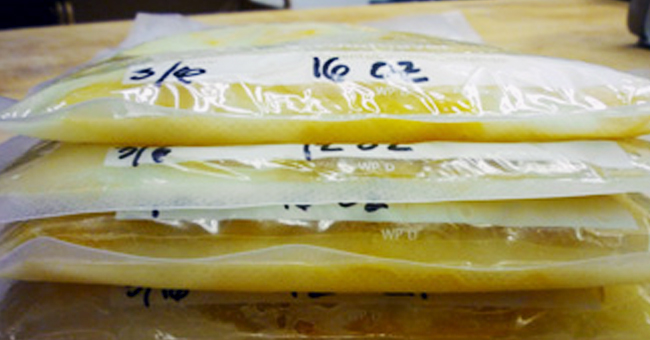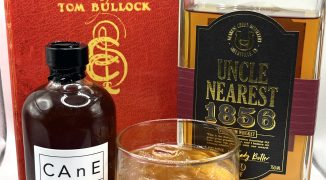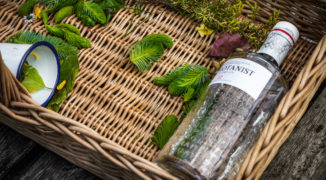For craft bartenders, the word “shortcut” might evoke less-than-desireable memories: prepackaged sour mix, bottles of syrupy grenadine, canisters of juice concentrates. But cutting down on prep-time doesn’t have to mean cutting corners. (And in an age where many bars are simply expected to craft their own syrups and infusions from scratch, in addition to all the other duties implicit in running a bar, a time-saving hack or three certainly can’t hurt.) We rounded up a few of our favorite time-savers for often labor-intensive DIY projects (like forming an oleo-saccharum for punch or achieving crystal-clear ice) from some of our favorite spirits writers, blogging bartenders, and cocktail nerds around the web.
1. Oleo-saccharum prepped in bulk (no babysitting required)
This centuries-old punch additive is simple to make — simply combine orange peels with sugar in a bowl, gently muddle, and wait for the sugars to extract the peels’ natural oils (while occasionally prodding things along with a quick stir). Not a particularly labor-intensive process, but it does take time — and if punch is a staple on your menu, it’s a duty you’ll most likely have to tend to daily. Portland’s Jeffrey Morgenthaler, however, found an even simpler method that allows him to batch oleo-saccharum in bulk without the daily babysitting, using vacuum-sealed bags. The airtight storage bags keep the oleo-saccharum fresh for four to six weeks. Check out the video demo below:
2. No-cook syrups
A derivative of the aforementioned Morgenthaler oleo-saccharum method, this quick syrup hack requires no mincing or dicing, no peeling of lemons or microplaning of ginger, no monitoring a simmering sauce pan, and no straining. Bartender and cocktail science writer Kevin Liu simply combines his ingredients of choice with demerara or granulated white sugar in zip-top baggies, and allows the mixture to sit for a few hours. Depending on the liquid content of your infusion ingredients, you’ll probably want to add water to the final product to adjust for drink-friendly consistency — Liu writes that the cucumber-sugar mixture liquefied beautifully, while the limes needed a little water added to dissolve the remaining crystals. It isn’t an exact science, but if you ask us, it’s worth experimenting with.
3. Nearly-instant infusions
Many professional bartenders know and respect Dave Arnold for his futuristic, mad-scientist approach to cocktail creation (as evidenced in his New York bar/cocktail lab, Booker and Dax). And if you’re familiar with Dave Arnold, you’re probably familiar with one of his many game-changing techniques — the rapid infusion being one of them. But because infusions are some of the most time-intensive ingredients to deal with, and because a list like this wouldn’t be complete without advice for a nearly instant way to do it, we simply have to include Arnold’s demo for using a cream whipper to infuse spirits in a fraction of the time.
4. Perfectly clear ice cubes
Granted, this isn’t a shortcut so much as a neat experiment, but given the money and time that go into craft ice programs, it could potentially be pretty useful intel. Camper English’s delightfully nerdy and informative spirits blog, Alcademics, has no shortage of nifty tricks and techniques worth tinkering with in your off-hours. (Dehydrated Campari fruit roll-ups, anyone?) His many ice experiments, though, have yielded some important findings for any bartender who pays close attention to the quality and clarity of their ice. In one of our favorites, he nests a dozen plastic storage cubes into an Igloo cooler and freezes the water with the top off. The trapped air inside the water (which is responsible for the cloudiness we often see in ice) freezes on the bottom of the cubes, which can then be cut off for a perfectly clear hunk of ice.
5. A quicker pickle
Incorporating pickled ingredients into a cocktail is a great way to add an unexpected savory punch to your drink, but pickling certainly isn’t the quickest of culinary methods — often, it can take a few days or a week. Using pressure, an iSi, and some physics knowledge slightly beyond our intellectual grasp, Dave Arnold manages to cut that pickling turnaround time down to about ten minutes.
6. Clarification, without the fancy equipment
Our pal Dave Arnold (yes, him again — he’s a genius, okay?) hipped the greater cocktail community to the use of centrifugal force to clarify fresh juices a couple years ago. But unless you’re willing and able to drop some cash on some biomedical equipment, agar might be your next best bet for beautifully clear juices. We’ll let the expert explain, but in a nutshell, agar is combined with juice, allowed to form into “curds,” and gently strained through cheesecloth. The muddy, cloudy parts of your juice are left behind, and the end product is a pretty close replica of what you’d get with centrifugation. Neat.
7. A better, faster, stronger dry shake
Most of us already know that a dry shake — shaking ingredients without ice for a quicker emulsification — can help us get an egg white cocktail to foamy, frothy perfection a bit more quickly. To expedite the process and perhaps save your triceps and biceps from total fatigue, you can also add something like a rubber ball or, as Alcademics reports, a cat toy. Camper English writes that some bartenders remove the spring from their Hawthorn strainer and add it to the shaker (effective, but also annoying). In our own non-scientific experiments, the metal spherical whisk-ball found in some shaker cups (like the Blender Bottle) does a bang-up job of frothing egg whites in a shorter amount of time, potentially cutting down on your Ramos-shaking time by a few minutes. It’s worth a try — especially at $4 for a pack of 5.





